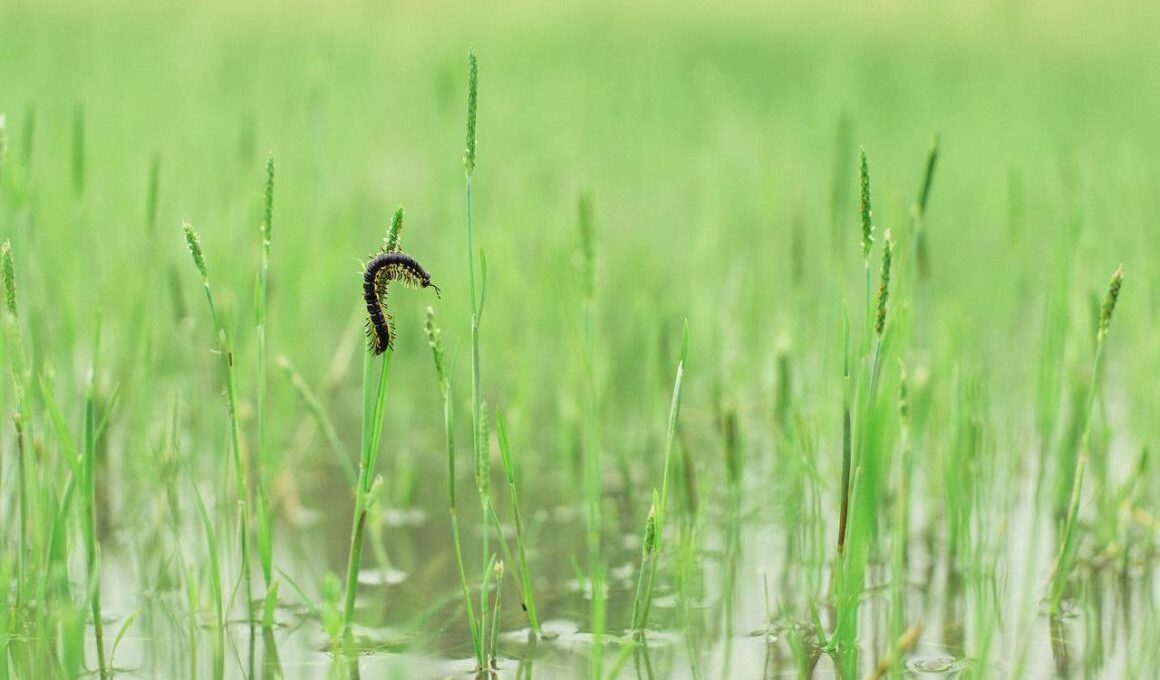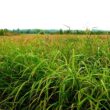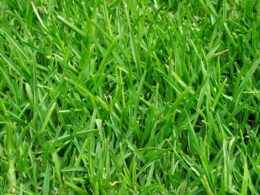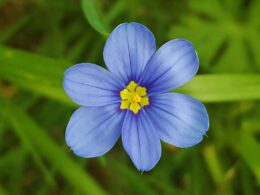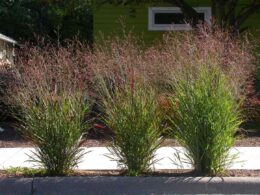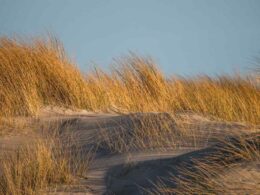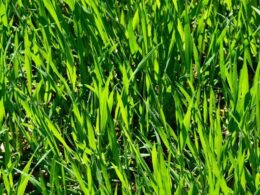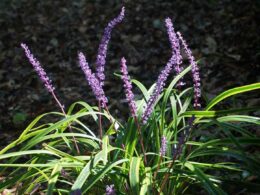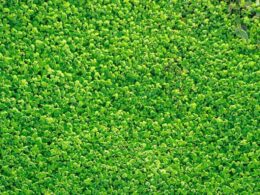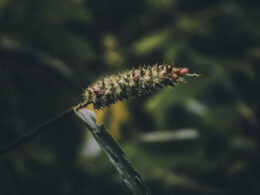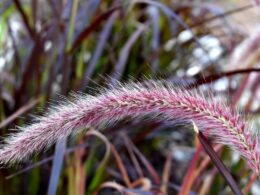Bahia Grass: Basic Information
Bahia grass (Paspalum notatum) is a warm-season perennial grass that is commonly used in pastures, hay fields, and turfgrass areas in the southern United States. Bahia grass is a durable grass that can tolerate heavy grazing and drought conditions. It is a warm-season grass, which means that it grows best in warmer climates. Bahia grass grows well in both sandy and clay soils, and it is tolerant of salt and drought.
Bahia Grass Appearance and Characteristic Features
The most characteristic feature of the flower is its distinctive V-shaped inflorescence, made up of two spike-like racemes with numerous small spikelets, each measuring 2.8–3.5 millimeters (0.11–0.14 inches). The grass can be 8 to 30 inches tall. The roots of Bahia grass are shallow but strong, making it well-suited for growing in sandy or loamy soils. While Bahia grass is not as tolerant of cold weather as other warm-season grasses, it can survive brief periods of cooler temperatures.
Bahia Grass Distribution and Habitat
Bahia grass (Paspalum notatum) is a warm-season turfgrass that is commonly used in pastures, hay fields, and as a lawn grass in the southern United States. Bahia grass is native to tropical and subtropical regions of Latin America, but it has been introduced to many other parts of the world. In the United States, Bahia grass is found in all states south of Virginia, as well as in California, Arizona, and Hawaii. Bahia grass prefers well-drained sandy soils and full sun, but it will also grow in clay soils and partial shade. Bahia grass is tolerant of drought and salt spray, making it a good choice for coastal areas.
How to Care for Bahia Grass?
Bahia grass is a common type of turfgrass that is used in lawns, sports fields, and other areas. It is known for its dense growth and ability to withstand heavy traffic.
Mowing
Mowing Bahia Grass can be difficult, because the blades are quite thick, and the grass is quite tall naturally. If you live in an area with a lot of Bahia Grass, it’s important to find a lawn mower that can handle the thick blades. You may also want to invest in a lawn mower with a grass catcher, because Bahia Grass can be quite messy.
Watering
Bahia grass, in particular, is a type of grass that thrives in hot, humid climates. Therefore, frequent watering is not necessary. During periods of extended drought, the grass should be watered more frequently.
Light
One of the keys to a healthy Bahia grass lawn is to provide the right amount of light. Bahia grass needs at least six hours of direct sunlight per day to thrive. If it does not receive enough light, it will become thin and weak.
Soil and Fertilization
The best soil for Bahia grass is acidic soil which is not high in nutrients. If you’re looking for a grass that is low-maintenance and doesn’t require a lot of fertilizer, then Bahia grass may be a good option for you. It also grows well in poor soil conditions.
Weed Control
Weeds are also a common problem in areas where Bahia grass is present. Maintaining a healthy lawn requires careful attention to both Bahia grass and weed growth. Fortunately, there are a number of effective herbicides and weed killers that can help to keep these pests under control. With a little effort, it is possible to create a beautiful lawn that is free of both Bahia grass and weeds.
Planting and Growing Bahia Grass Seed
When planting Bahia grass, it is important to choose a location that receives full sun. The soil should be well-drained and of moderate fertility. Bahia grass is a warm-season turfgrass that is commonly used in pastures, hay fields, and as a lawn grass in the southern United States. Bahia grass is tolerant to drought, heat, and heavy traffic, making it an ideal choice for areas that are difficult to keep watered or mowed.
Full Sun Exposure
When planting Bahia seed, it is important to choose a location that has well-drained soils and full sun exposure. The seed should be planted at a depth of 1/4 to 1/2 inch and kept moist until germination occurs. Once the seedlings have emerged, they should be mowed frequently to encourage dense growth. With proper care, Bahia grass will thrive in hot, dry conditions and provide a beautiful green lawn or pasture.
When to Seed Bahia Grass?
Bahia grass is a warm-season grass, which means that it grows best in temperatures between 75 and 85 degrees Fahrenheit. Warm temperatures and rain are perfect conditions for Bahia grass to germinate. In general, Bahia grass should be seeded in the spring or early summer. However, in areas with hot summers, it may be better to wait until late summer or early fall to seed the grass, as this will help reduce the risk of the seeds drying out or being damaged by heat.
Common Problems With Bahia Grass
One of the most common problems with Bahia grass is that it has a tendency to develop thatch. Thatch is a layer of dead and dying grass blades, roots, and stems that accumulates on the soil surface. While a small amount of thatch can actually be beneficial, too much of it can prevent water and nutrients from reaching the grassroots. As a result, the grass may become yellow or brown, and it may eventually die. Another common problem with Bahia grass is excessive growth. If Bahia grass is not properly fertilized and mowed, it can quickly become overgrown.
Is Bahia Grass Invasive?
It is widely cultivated as a forage grass in warm climates, and has naturalized in many places outside its native range. However, Bahia grass can also be very invasive, crowding out native vegetation and changing the ecology of an area. In some parts of the world, Bahia grass is considered a serious weed problem. It is therefore important to be aware of the potential risks before planting Bahia grass in your garden.





